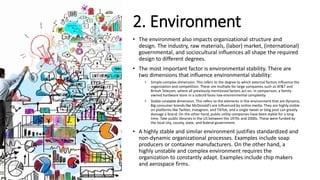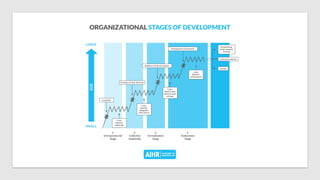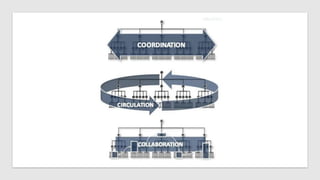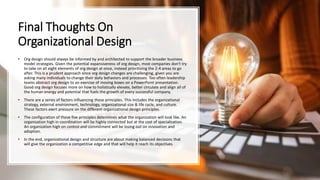A Guideline for Organizational Design.pdf
- 1. Organizational Design: A Complete Guide Seta A. Wicaksana Founder and CEO www.humanikaconsulting.com
- 2. Seta A. Wicaksana 0811 19 53 43 wicaksana@humanikaconsulting.com • Business Psychologist • Pendiri dan Direktur Humanika Consulting dan hipotest.com • Dosen Tetap dan Peneliti di Fakultas Psikologi UP • Pembina Yayasan Humanika Edukasi Indonesia • Wakil Ketua Asosiasi Psikologi Forensik Indonesia wilayah DKI • Penulis Buku: Sobat Way (2016), Industri dan Organisasi: Pendekatan Integratif dalam menghadapi Perubahan (2020), Human Faktor Engineering: Integratif Desain Manusia dan Lingkungan Kerja (2021), Psikologi Industri dan Organisasi (2021), Psikologi Umum (2021), Manajemen Pengembangan Talenta (2021), PIODiagnostik: Pengukuran Psikologi di Lingkungan Kerja (2021), Transformasi Digital: Perspektif Organisasi, Talenta dan Budaya Organisasi (2021), Psikologi Pelayanan (2021) dan Psikologi Konsumen (2021). • Dosen Tidak Tetap di: Program Pasca Sarjana Ekonomi di Univ. Pancasila, STP TRISAKTI, Fakultas Psikologi Universitas Mercu Buana, STIKOM IMA • Certified of Assessor Talent Management • Certified of Human Resources as a Business Partner • Certified of Risk Professional • Certified of HR Audit • Ilmu Ekonomi dan Manajemen (MSDM) S3 Universitas Pancasila • Fakultas Psikologi S1 dan S2 Universitas Indonesia • Sekolah ikatan dinas Akademi Sandi Negara
- 3. Organizational Design Organizational design is as much an art as it is a science. The process of creating a system in which people can work together to achieve common goals is highly complex and there is no one way to do it right. In this article, we will explain what organizational design is, what drives organizational design, how to design an organization, and how an effective design can be measured in terms of organizational effectiveness.
- 4. What Is Organizational Design • Organizational design is the administration and execution of an organization’s strategic plan. • This means that the organization’s strategy determines the optimal organizational design. In addition, it also means that there aren’t really any organizational design best practices. • Organizational design is more about creating the best fit between the strategic choices of the organization and the organizational setting.
- 6. Case study • For example, Company A operates in an established market and is looking to maintain its position. This company will have a low-cost leadership strategy focused on efficiency. In terms of organizational design, this company will have a strong, centralized authority, tight control, and many standard operating procedures. • Company B is an innovative and fast-growing organization that emphasizes learning. This company will have a more fluid and flexible design, a much more decentralized structure, loose control, employees are working directly with customers, and are rewarded for creativity and risk- taking. • In company A, risk-taking and failing are punished while in company B, it is much more likely to be rewarded, evaluated, and learnings from the failed project will be used as a stepping stone for a new project.
- 7. Five Factors Affecting Organizational Design • Strategy. Strategy dictates the strategic priorities of an organization. This is the most important influencing factor of organizational structure and design. • Environment. The environment a company operates in influences its strategy but also dictates how it positions itself. In a rapidly-changing environment, the organization has to design for more flexibility, or adaptability, while in a stable environment the organization can optimize for efficiency. • Technology. Information technology is a key enabler for decision making. The state of IT impacts organizational design as well. When systems are in place and decision making is based on data, the organizational structure and design – including the potential for hierarchical control – will be different from an organization where most of the data is stored in unorganized Excel sheets. • Size & life cycle. The organizational size and life cycle also impact the organizational structure and design. A 20-person company has very different challenges when it comes to design compared to a 200,000-person company. • Culture. The organizational culture is another key element that impacts organizational structure and design – and, vice versa, design also impacts culture.
- 8. 1. Strategy • The organizational strategy is the most important starting point for the organizational structure and design. It goes beyond the scope of this article to explain how a strategy is created – we have a great article on HR strategy in case you want to check this out. • Michael E. Porter proposed that organizations can compete through lower cost or through the ability to offer distinctive products and services which command a premium price. The second step is to determine whether the organization has a narrow or broad scope. This means that the organization either competes in many or in select customer segments.
- 9. 1. Strategy (Cont’d) • Different strategies justify a different organizational design. For example, take a beverage company that sells premium whiskey liquor. The focus here is a specific market segment (well-off customers who drink whiskey) with differentiation strategies involving strong branding. • In this organization, production may be a specialized business unit focused on one thing: producing a specialist technological product for DJs. There is some specialization in the production department but the real innovation happens within specialized product teams in which R&D and marketing are in constant touch with customers to develop new features and products the market needs. • Similarly, sales and marketing are business units. They have different, cooperative, horizontally coordinating overlay units under them – e.g. branding and sponsorships, digital marketing, public relations, video/multimedia. These units are highly collaborative with each other and are constantly in touch with the market, leading to high coordination. Specialists have high responsibility and although there is a formal sign-off procedure for marketing campaigns, many of the campaigns happen in decentralized project teams that consist of people from multiple overlay units that communicate with each other frequently as the market is a niche market in which marketing needs to be well-coordinated. • Compare this to a low-cost, broad target cost leadership strategy. We take a soap production company as an example. They produce hundreds of soaps – and although they do some marketing and sales to retail stores for a few of their lines, most of the soaps are produced for external brands. The organizational setup is highly siloed and not expected to change.
- 10. 2. Environment • The environment also impacts organizational structure and design. The industry, raw materials, (labor) market, (international) governmental, and sociocultural influences all shape the required design to different degrees. • The most important factor is environmental stability. There are two dimensions that influence environmental stability: • Simple-complex dimension. This refers to the degree to which external factors influence the organization and competition. These are multiple for large companies such as AT&T and British Telecom, where all previously mentioned factors act on. In comparison, a family- owned hardware store in a suburb faces low environmental complexity. • Stable-unstable dimension. This refers to the elements in the environment that are dynamic. Big consumer brands like McDonald’s are influenced by online media. They are highly visible on platforms like Twitter, Instagram, and TikTok, and a single tweet or blog post can greatly damage a brand. On the other hand, public utility companies have been stable for a long time. Take public libraries in the US between the 1970s and 2000s. These were funded by the local city, county, state, and federal government. • A highly stable and similar environment justifies standardized and non-dynamic organizational processes. Examples include soap producers or container manufacturers. On the other hand, a highly unstable and complex environment requires the organization to constantly adapt. Examples include chip makers and aerospace firms.
- 11. 3. Technology • Technology greatly influences organizational design. We saw this through the COVID-crisis where many companies effortlessly went digital and some even closed their offices. • WordPress, a popular blogging platform, has a 100% remote workforce. This is possible through the extensive use of technology and technology-driven collaboration. • Information Technology also enables organizations to become more decentralized, improve horizontal coordination through intranets, and external collaboration becomes possible through extranets. In fact, Slack, one of the most-used collaboration tools allows internal and external collaborators to join the same team through different internal and external channels, enabling fast communication.
- 12. 4. Size & life cycle • Size is another factor that impacts organizational design. Small organizations are usually responsive, flexible, flat, organic, and entrepreneurial. Large organizations create value through efficiencies, have a global reach and brand, a more stable market, and put more emphasis on managers. This leads to different organizational design choices. • As organizations grow, they go through different stages of development. Knowing which stage an organization is in helps to spot misalignment between the organizational goals and strategy and the organizational structure. In addition, it helps to identify which crisis the organization is likely to face.
- 14. 5. Culture • Every organization has its own unique culture based on their values, assumptions, beliefs, attitudes, feelings, stories, heroes, symbols, language, and habits. These cultures are best summarized in the competing values framework. • This framework proposes that there are a number of competing values in an organization: flexibility vs. stability, and an internal vs. external focus. The values compete, meaning that it is not possible to be both stable and flexible, or both internal and external focused. • Different cultures lead to different organizational structures. An internally focused organization will have more collaboration, while an externally focused organization will have more customer-facing project groups and business units. • Similarly, a highly stable organization has clearly defined business units while a flexible organization has much more market-focused horizontal overlay units that use different specialists to create customer value.
- 16. Organizational Effectiveness • Once you have created an organizational design appropriate for the five factors we mentioned earlier, the result is an effective organization. This means an organization that is able to reach its mission and goals. • Organizational effectiveness is hard to measure. However, when we understand it well, the signals in the organization can provide us with input on improvements for the organization. Let’s conclude this article with three approaches to measuring organizational effectiveness. • The approaches correspond with different phases of the production process. This is an input – process – output (IPO) model. At each step, organizational effectiveness can be measured. • The first indicator of organizational effectiveness is the resource-based approach. This approach looks at the input and assesses effectiveness by evaluating whether the organization effectively obtains resources necessary for high performance. • The Internal process approach looks at the production process and assesses effectiveness using internal health and economic efficiency. Examples include a strong culture, trustful communication, swift decision making, undistorted communication, and interaction between the organization and its parts. • The third indicator is the goal approach. This approach assesses effectiveness by looking at how well the organization reaches it goals. Key here is to focus on operational goals, as these are easier to specify and measure.
- 18. The Big Picture On Organizational Design • Before Organizational Design, Solve the Business Model - You should solve organizational design after the other business model strategies. • Organizational Design is about Structure, Roles & Competencies - Within structure, roles & competencies, there are eight elements of organizational design. • Don't Tackle too Much - Too much change to org design is difficult for organizations to digest. • Be Comprehensive & Inclusive in Organizational Design - Strong org design projects are built on a foundation of comprehensive analysis and collaborative iteration.
- 19. Organizational Design - Structure, Roles and Competencies • Organizational design is crucial to a company's people strategy. • Organizational design centers on the reporting structure of people, their roles, and competencies. • To drive the efficiency and effectiveness of the organization in developing and delivering the value proposition and go- to-market, it is essential the organizational design aligns with and reinforces the mission and business model strategy. • Employee journey and culture are the two other elements of a company's people strategy, which we cover in the next module.
- 21. The 8 Elements Of Organization Design
- 22. 5 Factors and 8 Elements for Organizational Effectiveness 5 Factors •Strategy. •Environment. •Technology. •Size & life cycle. •Culture. 8 Elements •Organizational principles •Framing •Overall size and team size •Layers and Span of control •Reporting Structure •Team •Individual •Cross-functional Organizational Effectiveness
- 23. 1. ORGANIZING PRINCIPLES • Organizing principles help shape the organizational design. On one end of the spectrum is the concept of a flat and social org, and on the other side of the spectrum is a hierarchical structure. • Flat organizations have very few or even no defined layers, instead of relying on self- managing individuals and teams. Flat organizations don't rely on an org chart, instead depending on the social connections of individuals to collaborate on specific problems and opportunities. • Gore Inc., the $3+ billion manufacturers of high-end waterproof materials has a flat and social organization. Consistently placing in Forbes' Top 100 Best Places to Work, Gore doesn't have an org chart, refers to all employees are "Associates," and relies on the self- managing teams to innovate on new ideas and products. Flat and social organizations can be the right model for companies in highly dynamic markets, where innovation and agility are essential to competing. • On the other side of the spectrum are highly hierarchical organizations, where the structure is hierarchically disaggregated into functions. Decisions and directions typically flow down from executives to functional leaders to team leaders to individual contributors. Hierarchical organizations generally are a good fit for markets with a slower pace of disruption and where operational execution and specialization is key to competing. • Of course there is substantial space between the two sides of the spectrum, where there may be a defined hierarchy, but the culture supports a high level of communication and direction flowing in all directions, collaboration, and team orientation.
- 25. 2. ORGANIZATIONAL FRAMING • The next level of org design is around organizational framing. Is the org design going to be framed as a functional organization, organized into business units, markets and/or geographies, or matrixed across multiple dimensions? • Determining the right framing structure is based on sheer size, focus, economy of scale, core competencies, market, and competitive dynamics. • In far too many situations, especially with new leadership regimes, reframing the organization (e.g., reorganizing from markets to geographies) is heavily relied on to improve the organization, only to have the organization typically fall into chaos and inefficiency. The change management necessary to properly reframe an organization is enormous, given the changes required to potentially thousands of processes across the organization, reporting relationships, and roles and competencies. Too often than not, in reorganizations the leadership does not invest enough resources and effort into the necessary change management.
- 27. 3. Overall Organization & Team Size • In organization design, it can be channeling to decide on the overall size of the org, functions, and teams is one of the toughest decisions. • There are many data sets and benchmarks to help guide this decision. • Some of the most commonly used benchmarks include revenue per employee (productivity), net income ratios, SG&A, and functional breakdowns. • Kentley Insights has these benchmarks and many more on over 1100+ industries.
- 29. 4. LAYERS & SPAN OF CONTROL • Over time, an organization is like a house, it gets messy. Typically, one of the first things to address in org design is layers and span of control. • Layers are the number of management layers in the organization, while the span of control is the average number of direct reports per manager. Typically the fewer layers (5 or less) and the higher the span of control (7-12) the better. • Doing the analysis and mapping out the org is always one of the most fruitful org design analyses. Expanding the span of control and delayering the organization will drive efficiency and effectiveness by improving decision making, communication, collaboration, and reducing bureaucracy and costs.
- 31. 5. REPORTING STRUCTURE • The most nuanced and complex decision in org design is landing on the actual reporting structure, which necessitates putting names and titles in boxes. The better the data and analysis informing the decisions, the better decisions. • Deeply understand & assess your current leaders and your bench of future leaders with objective functional metrics/scorecards, leadership and interpersonal assessments, 360-degree feedback, and succession plans.
- 33. 6. INDIVIDUAL ROLES • Individual roles are a mix of competencies, responsibilities, and accountabilities. Ensuring people appropriately define and support the right roles is a critical component of org design. • Most companies tend to spawn too many new roles and positions. Role proliferation can lead to unnecessary complexity, redundancy and costs. In these situations, part of an org design is to rationalize the number and scope of roles and positions. Not only does role rationalization lead to a more efficient and effective organization, but also typically leads to more growth potential for individuals by providing them with a clearly defined and achievable career path, more mentors, and more standardized training and support. • When designing a new role or redesigning an existing role, the ROLES framework below helps set up individual roles for success.
- 35. 7. TEAM STRATEGY • Most individuals in a company role up to permanent or temporary teams. Within an organization, each team should have its own charter defining its mission, team strategy, structure, roles, employee journey, comp & benefits, environment, norms, and values. • Creating, evangelizing, and living by the team charter supports a team's success and member satisfaction.
- 37. 8. CROSS FUNCTIONAL EXCELLENCE • The last element of org design is cross-functional excellence. Siloed organizations can be highly political, strategically misaligned, and cross-functionally inefficient. What defines cross-functional excellence is the level of coordination, circulation, and collaboration. • Cross-functional best practices are typically pragmatic and simple. First, define and expose functional processes, so that anyone can easily understand how best to work with a function or team. Also, establish and manage well- defined cross-functional processes. Moreover, focus on ways to better connect people across the organization through a directory or social networking platform, rotational management programs, all-company events and communications, interest groups, cross-functional project teams, and other ideas.
- 39. Organizational Design Strategy Project An org design strategy project can drive substantial positive change while improving the overall efficiency and effectiveness of the organization. Any org design strategy project involves four basic steps, including baseline, design, plan and execute.
- 40. Final Thoughts On Organizational Design • Org design should always be informed by and architected to support the broader business model strategies. Given the potential expansiveness of org design, most companies don't try to take on all eight elements of org design at once, instead prioritizing the 2-4 areas to go after. This is a prudent approach since org design changes are challenging, given you are asking many individuals to change their daily behaviors and processes. Too often leadership teams abstract org design to an exercise of moving boxes on a PowerPoint presentation. Good org design focuses more on how to holistically elevate, better circulate and align all of the human energy and potential that fuels the growth of every successful company. • There are a series of factors influencing these principles. This includes the organizational strategy, external environment, technology, organizational size & life cycle, and culture. These factors exert pressure on the different organizational design principles. • The configuration of these five principles determines what the organization will look like. An organization high in coordination will be highly connected but at the cost of specialization. An organization high on control and commitment will be losing out on innovation and adoption. • In the end, organizational design and structure are about making balanced decisions that will give the organization a competitive edge and that will help it reach its objectives.
- 41. Learning and Giving for Better Indonesia www.humanikaconsulting.com









































